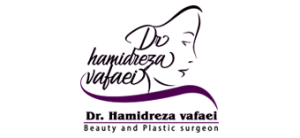Cheek Augmentation Surgery
Adding shape, volume, and contour, cheek implants or cheek augmentation is a transforming surgical procedure for women with narrow, weak cheek structure, as well as those who have lost cheek volume due to the natural aging process. Cheek surgery effectively enhances the projection of the cheek, transforming sunken cheeks into more youthful-looking, revitalized cheeks.
What Is Cheek Augmentation Surgery?
Full, defined cheeks are a sign of youth and beauty, but over time the face loses fat, causing the cheeks to become flat and saggy, giving way to a sunken-in look. Although some are born with naturally high cheekbones, achieving the look of sculpted cheeks can be accomplished through both nonsurgical and surgical treatments that focus on restoring plumpness, volume, and definition.
Types of Cheek Surgery
Before deciding to have any form of cosmetic surgery, it is important to understand the basics of the procedure. This will allow you to make an informed decision and have realistic expectations.
Zygoma Reduction Plasty (Cheekbone Reduction Surgery)
Cheekbone reduction surgery is a procedure that reduces the structure of the cheekbone to create a more proportioned look of the face. There are two techniques used to achieve the desired results – cheekbone shaving and a more invasive cheekbone osteotomy.
Dimpleplasty
Dimpleplasty is a minimally invasive surgery used to create natural-looking dimples on the cheeks or chin. To perform the procedure, the plastic facial surgeon finds the natural place to form a dimple. A suture is passed through the inside of the cheek (or for chin dimples, through the inside of the bottom lip), to catch the undersurface of the skin. When the suture is tied, it creates a dimple in the overlying skin. The surgical procedure usually takes around 30 minutes. It can be performed under local anesthesia, and should not leave a visible scar on the outside of the face.
Who is a good candidate for cheek augmentation?
The best candidates for cheek augmentation surgery are people who have cheekbones that are not prominent and are in good general health. These patients should also have a positive attitude about surgery and should not have been coerced into getting surgery by another person. Remember, it’s your face and your body, so only you should make decisions about any sort of surgery. It’s also important that patients not have any medical conditions that may not make them eligible for surgery.
In addition, if you are undergoing a full makeover, you may be a good candidate for cheek implants. An extreme makeover means that you can undergo multiple facial surgery procedures at one time.
What are the steps of a cheek augmentation procedure?
Medications are administered for your comfort during the surgical procedure. The choices include local anesthesia, intravenous sedation and general anesthesia. Your doctor will recommend the best choice for you. A cheek augmentation requires different incisions based on the technique used. If fat transfer is used to enhance your cheeks, you will likely have a small incision near the area of fat that is harvested and small incisions near your cheeks. These incisions usually measure just several millimeters in length. If solid cheek implants are used, then the incision is based on your surgeon’s preferred approach. Some plastic surgeons insert cheek implants through an incision inside the mouth, whereas other plastic surgeons perform the operation through an incision under your eyelid. Sutures, skin adhesives or tapes close the skin incisions.
What are the risks of cheek augmentation?
The possible risks of cheek augmentation include, but are not limited to:
- Bleeding
- Infection
- Poor healing of incisions
- Hematoma
- Anesthesia risks
- Fluid accumulation (seroma)
- Skin loss
- Numbness or other changes in skin sensation
- Skin discoloration and/or prolonged swelling
- Unfavorable scarring
- Fatty tissue found deep in the skin might die (fat necrosis)
- Fatty cysts
- Deep vein thrombosis, cardiac and pulmonary complications
- Thick scar tissue around cheek implant (capsular contracture)
- Cheek implant displacement
- Asymmetry
- Lumpiness
- Blindness (rare complication of fat transfer)
- Suboptimal aesthetic result
- Possibility of revisional surgery
- Persistent pain
- Poor aesthetic result of donor site for fat transfer
These risks and others will be fully discussed prior to your consent. It’s important that you address all your questions directly with your plastic surgeon.
How Much Does Cheek Augmentation Cost?
In general, patients should know that cheek augmentation procedures, like many other cosmetic procedures, have a wide variation in cost. The price you can expect to pay for each procedure will accord to the rates of the cosmetic surgeon you choose, the geographical location where you’re having the procedure done, and other factors that are particular to your situation. Most importantly, the costs of cheek augmentation will vary depending on the type of treatment you choose. While the least expensive procedure may seem like the best deal, the drawbacks may not make the treatment worthwhile in the long-run, which is why it’s very important to weigh the pros and cons of each surgery to evaluate those costs concerning the benefits.
What should I expect after cheek augmentation surgery?
The final results of cheek augmentation surgery may be initially obscured by swelling. If your cheeks are augmented using fat transfer, the results will be based upon how much fat was injected into your cheeks and how much fat your body has retained. This can be determined by many factors, such as surgical technique and your own body’s individual metabolism. If solid cheek implants are used, then your final result will be more predictable. In some cases, it may not be possible to achieve optimal results with a single surgical procedure and another surgery may be necessary.
When you go home, if you experience shortness of breath, chest pains or unusual heartbeats, seek medical attention immediately. Should any of these complications occur, you may require hospitalization and additional treatment. Following your physician’s instructions is key to the success of your surgery. It is important that the surgical incisions are not subjected to excessive force, abrasion or motion during the time of healing. Your doctor will give you specific instructions on how to care for yourself.
Frequently Asked Questions About Cheek augmentation
Am I Going to Have Scars?
Cheek augmentation does leave scars, however, because the incisions are made inside the mouth, scarring is not visible.
How Long Do I Need to Take Off From Work?
You can expect to take at least one week off from work to allow yourself to heal from the procedure. However, it is important to note that because this surgical procedure is performed on a part of your body that is hard to conceal, you will want to wait several weeks before attending social events. We recommend postponing major social events for at least four weeks to allow the swelling and bruising to subside. Your plastic surgeon will follow up with you after surgery to determine when it is safe for you to resume your normal activities.
How Soon Will I See Results?
You will notice an immediate difference in the size and shape of your cheeks right after surgery. However, this is not the final result; it may take a few months to realize the final results. Following surgery, you should expect to have swelling in the area around the cheeks. The swelling is temporary and should subside within a few weeks.








Leave a Reply
Want to join the discussion?Feel free to contribute!